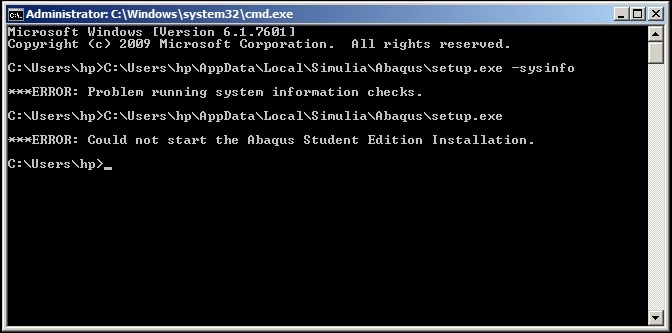

- Abaqus 6.13 learning tutorials pdf#
- Abaqus 6.13 learning tutorials full#
- Abaqus 6.13 learning tutorials software#
Numerical Hopkinson Bar Analysis: Uni-Axial Stress and University of Maryland, College Park, in partial fulfillment

Abaqus 6.13 learning tutorials pdf#
analysis, and Abaqus Manual 6.13 Pdf Abaqus SE Installation Instructions. Getting Started with Abaqus: Keywords Editionĩ.1 Types of problems suited for Abaqus/Explicitĩ.4 Example: stress wave propagation in a barĢ) MODELING AND EXPERIMENTAL INVESTIGATIONS OF THE SHOCKĭissertation submitted to the Faculty of the Graduate School of the Abaqus Plane Stress Tutorial December 24th, 2019 - ME 455 555 Intro To Finite. I would really appreciate if anyone could help me.Ī few selected publications on SHPB modeling, available freely: I don’t know how and what equations I should use and Standart (version 6.13.2) does not allow plastic or Johnson-cook or EOS. Hardening parameter but I have a problem with concrete compression damage andĬoncrete tension damage. 1-1 ABAQUS Tutorial: Schedule & Proceedings. Here is an overview of these additional SIMULIA products. And starting from Abaqus release 6.13-2, all these additional capabilities are included in a single licensing scheme called extended tokens. I have derived both Tension stiffening and Compression The functionalities now include process automation, parametric optimizations, topology optimization, fatigue estimation, and many more. I have conducted an experiment for both uniaxial tensile andĪBAQUS concrete damage plasticity. I’m trying to model a reinforced concrete beam using concreteĭamage plasticity. Mso-fareast-font-family:"Times New Roman" I think it is very challenging problem because of the highly nonlinear material properties and coupled phenomena. To ensure whether abaqus, fortran and visual studio are linked you must run. I'm not sure what kind of problem you are interested in, but from what you described, I think your work may be related to residual stress/strain after welding or joining process. I myself use a combination of visual studio 2012, intel fortran composer 2013 and abaqus 6.13 to run umat subroutines. I think the FE simulation of FSW is much more difficult than arc welding. Dynamic recrystallization taks place dramatically in FSW.

Anyway you can implement the model easily using subroutines.įSW is still very difficult to model, because the FSW is not simply melt and solidification process.
Abaqus 6.13 learning tutorials software#
But another FE software MSC.MARC has already succeeded in implementation of Goldak model as GUI module. I dont know if the newest version of ABAQUS provides the Goldak model or not. ABAQUS version 3 was released in June 1979. That paper is a classical work.Another review is also good: Modeling of fundamental phenomena in welds,T Zacharia / J M Vitek / J A Goldak / T A DebRoy / M Rappaz / H K D H Bhadeshia,Modelling and Simulation in Materials Science and Engineering,3 (2), p.265-288, Mar 1995. ABAQUS version 1 was created for a specific client - Westinghouse Hanford Company which used the software to analyze nuclear fuel rod assemblies. I highly recommend you to read Goldak's first paper of double eclipsoid welding pool model:COMPUTER MODELING OF HEAT-FLOW IN WELDS, METALLURGICAL TRANSACTIONS B-PROCESS METALLURGY 17 : 587 1986. For FE simulation, I only carried out FEM calculation of arc welding, such as TIG, MIG and Laser. So before your start, please decide which branch you should choose because both are not so easy to study. Although both of them are joining process, the mechanism of FSW is far away from the traditional arc welding. I’m post-graduate student in school of Civil Engineering at the National University of Ireland-Galway, EIRE.I think FSW is quite different from laser beam welding.
Abaqus 6.13 learning tutorials full#
The model is being advanced to develop the full story of steel braced frames for use in earthquake engineering application. Beside all, the model has an advantage over other models, (like phenomenological and physical theory based model) in the sense that it yields accurate results as well as offers platform for detailed and scientific analysis. The work has been published, and is being in the phase of revision in good journals. In addition, it has been successfully used to modify an existing equation which estimates lateral deformation of braces. The model is successfully applied to conduct an imperfection sensitivity study to determine a real imperfection field. The model is validated using 16 quasi-static cyclic testing, carried out at the Imperial College London. The objective of the project is to develop a robust and comprehensive finite element model of steel hollow braces that can be used with confidence both in academics and industry.


 0 kommentar(er)
0 kommentar(er)
